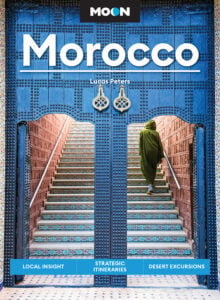
Taliouine, the heart of Morocco’s saffron producing region, lies south of Marrakesh and east of Taroudant. The city itself is small – just under 6,000 people – but produces more saffron than any other place in Africa. Every November, a festival is held at harvest time and people from around the world come to watch and celebrate. While the best way to experience this is by visiting, we will give you an inside glimpse through this photo essay.
Taliouine is a small village in the heart of the Sirwa, a mountain range known for its dramatic changes in weather conditions. Encompassing vast, rocky valleys that stretch as far as the eye can see, the region seems uninhabitable. Infrastructure is limited; basic amenities like hospitals and schools do not reach surrounding villages. Farmers here are faced with enduring challenges, yet the Taliouine province is one of Morocco’s most treasured agricultural regions and has been inhabited and cultivated for many centuries.
This is true Amazigh country. The Berber people who inhabit these terrains share an understanding and connection with their environment. Once a volcanic plateau, the soil underneath all the rocks and shrubbery is incredibly fertile; when farmed with the specific techniques and know how, is amazingly plentiful. Quality of farming here lends itself not to the sophistication of farm machinery, but to the skill and determination of the farmers themselves.
The region’s high altitude (1586m), distinct weather patterns, and high mineral content allows for an especially prosperous window in the agricultural calendar: the saffron harvest. Worth its weight in gold, saffron is the most expensive spice in the world. Morocco is the fourth largest producer in the world and while saffron is also farmed in the Ourika Valley, over 90% of its cultivation occurs in the Taliouine region. As a result, the town’s relationship with saffron is built on a dependency and respect for the fortune it brings. Guesthouses and restaurants are all named after the crocus and it is reflected in the local cuisine and traditional medicines. Almost everything from Moroccan salads to kefta and tajines are sprinkled with a healthy dose of saffron stigmas, as if it were salt and pepper, while saffron tea is continually being brewed.

A view over Taliouine from the Oued Souss river bed.

A mountainside surrounding Taliouine lights up in the golden sunlight at sunset.

Saffron crocus fully open in the morning sunlight at the Auberge Le Safran, Taliouine.

Up close with a dewy saffron crocus.

Close up of a plateful of saffron flowers after being picked and left out to dry.

Saffron crocus in full bloom.

A visitor enjoys a Moroccan salad with a saffron-infused vinaigrette dressing.

Moroccan kefta tajine sprinkled and infused with saffron.
Souktana Cooperative
Souktana is the oldest saffron cooperative in Taliouine and works to help saffron farmers in the region sell their annual yield at a fair price for all parties involved. Before cooperatives were formed, farmers would often find themselves selling at low prices while at the hand of large distributors in the cities. Through the work of Souktana and many other co-ops in the region, large amounts of farmers unite and agree on setting fair prices. The saffron is sold online by the co-op to all over the world, and businesses from all across Morocco purchase saffron from Souktana to re-sell in cities like Marrakesh and Casablanca. Products made by the co-op include saffron-based cosmetics like soaps, body lotion, facial and hand creams, saffron-flavored chocolates, toffees & dried fruits as well as artisanal products and artwork sold by artisans from the Taliouine region.

The Museum of Saffron Cultivation at the Souktana Cooperative.

A visitor enjoys the Museum of Saffron.

Weighing saffron is serious business.

Showcasing their labor of love.

Saffron gift bag being prepared for a traveler.
Farmers who have agreed to work with the cooperative bring their annual harvest and are allocated their own locked box with a code. Once the farmers’ annual yield has been checked, weighed and separated, Souktana then agrees to purchase, outbidding the average price of the market. The co-op then divides all the profits at the end of each year and shares them out according to how much saffron each farmer produced. Everybody works together to boost sales and members also pool their money to help subsidize farmers with problems, such as paying for medical care, schooling, or clothing, and heating during the winter. At present, there are six presidents of the cooperative and dozens of members supplying saffron to Souktana.
Harvesting: Saffron Fills the Senses – Read Part II









